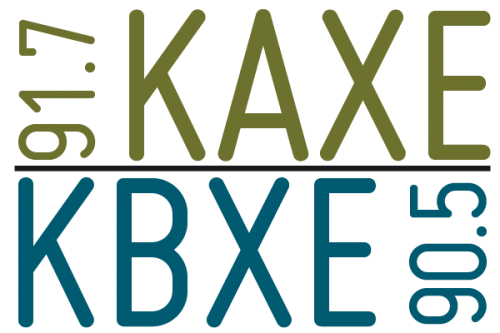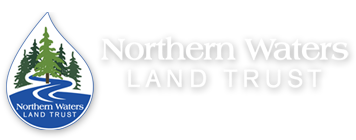Conservation Conversation: Featuring Paul Radomski
Conservation Conversations: Lakes of Biological Significance | KAXE, featuring Paul Radomski (DNR Biologist, co-author of Lakeshore Living and author of Walleye: A Beautiful Fish of the Dark).
Heidi: Good morning, John. Good morning, Paul. Thanks for being here today!
Paul: Good morning, Heidi and John!
Heidi: And here is Annie Knight joining as well. Annie is the grants manager and conservation specialist at Northern Waters Land Trust. Annie, thanks for being here!
John S.: [She’s] the real brains behind this whole organization, by the way. So, John, it doesn’t seem like a year and a half, does it?
John L.: Boy, it does not.
John S.: But, you know, time flies when you’re having fun.
John L.: I would say so!
Heidi: I think Annie’s the only one of us who remembered how long we’ve been talking!
Annie: Thank you, I’ll take credit for that.
John S.: I’m back from sunny Mexico just in time to get in on the tail end of winter.
John L.: We saved it for you!
John S.: I have gotten absolutely no sympathy in the last two weeks I’ve been home.
John L.: You know, when you show up with a tan like you have, everybody’s pretty suspicious right away.
John S.: That’s the truth!
Heidi: I’m surprised they let you on the zoom today, John!
John S.: You know, I am too, but here I am.
Heidi: So, Annie, I have a question before we get into this week’s topic of lakes of biological significance. Why are these monthly conversations on a community radio station important to organizations like yours?
Annie: As you said, a year and a half ago, we started having this conversation series. John was really the mastermind behind asking you, Heidi, if we could come on the radio. I remember saying, “KAXE? They’re so cool. Are you sure we’re up to the task?” And Heidi, you were so welcoming. I really appreciate how community-centered this radio station is. Part of our goal for coming on the radio show was to bring our collaborating partners as well, to learn from them. I think it fits really well with your mission and goals as a radio station to unite people in the area. I’ve learned a lot just by being on the show and talking with our partners. Often, our conversations on the show are discussions we don’t get to have during our day-to-day work. I’ve been super grateful to have these conversations and be here.
John S.: When Annie and I discussed how to reach people in north-central Minnesota to have a regular conversation about conservation and the Northern Waters Land Trust’s work, we concluded that KAXE was our best choice. Surprise, surprise! The people who sustain locally supported community radio are the same people that support clean water, healthy forest, and productive habitats. So, we are really reaching the core audience we were hoping for. I think that’s why this has been so successful and why we’ve gotten such a positive reaction. It’s always been my philosophy to always go with the experts, and that’s why we’ve got Paul Radomski with us today!
Heidi: Yes, let’s meet Paul! Tell us why you brought him in, Annie.
Annie: Paul is the mastermind behind the Lakes of Biological Significance program. We will collaborate with the Minnesota Land Trust for an upcoming Lessard-Sams Outdoor Heritage Fund grant for the program. So, we thought it would be perfect timing to bring in Paul, the expert, to talk about Lakes of Biological Significance! Paul works as a biologist for the DNR. He is the coauthor of Lakeshore Living and the author of Walleye: A Beautiful Fish of the Dark. So, Paul, thank you again for joining us! Could you tell us what a lake of biological significance is?
Paul: Thanks for inviting me this morning; it’s great. The lakes of biological significance are a list of high-quality lakes based on their biological characteristics, including the plant and animal communities that live in or along the shore of the lake. They include lakes with high aquatic plant richness, important wild rice lakes, high-quality self-sustaining walleye lakes, native lake trout lakes, cisco refuge lakes, lakes with colonial waterbird nesting areas, and lakes with important loon nesting areas; the list goes on. They are the best of Minnesota’s 10,000 lakes. About 15% of Minnesota’s lakes are classified as lakes of biological significance. Within the Department of Natural Resources (DNR), we use the list to prioritize our management actions. Others in the government use it as well, and it’s great that the Northern Waters Land Trust and the University of Minnesota will use it to help prioritize their work.
John L.: Paul, these sound like some pretty varied lakes. You’ve described many different things that make them significant, and some of those qualifications are exclusive from one another. So, these obviously aren’t all these pristine, clear water lakes I like to snorkel in; these have a lot of different types of habitats. How do you draw the lines?
Paul: That’s a good question! As you might know, the DNR has been identifying outstanding lands based on their biological communities. Similarly, the DNR has a lot of biological data on lakes across the state, both large and small. So, we gathered together a group of biologists, including fisheries biologists, aquatic botanists, and bird and amphibian biologists. We asked them, “what kind of criteria would you use to identify outstanding lakes in Minnesota?”. We decided on the criteria we could use to objectively assess these 10,000+ lakes as a group. We did that initially in 2020 and did it again recently. We expect to do this every five years as we gather more biological information. We use these criteria to identify lakes across the state. So, in some parts of the state, we’ve got shallow, small lakes, while in other regions, we’ve identified beautiful clearwater lakes you might snorkel in!
John L.: What sort of steps do you take to keep them the way they are? How do you ensure that the things that make them special now are retained in the future?
Paul: That’s a good question. We’ve been working with lower units of government in their watershed planning efforts. We’re prioritizing protecting healthy lakes and restoring stressed or degraded lakes. We help them consider how to restore their watersheds to protect water quality and the plants and animals that live in those lakes. Likewise, in the DNR, we do the same thing as we review environmental projects. We always have choices when we think about protecting additional properties, right? So, we will prioritize these higher-quality lakes for protection and restoration.
John L.: So, John and Annie, what sort of work are you doing in coordination with Paul to ensure these lakes are protected?
Annie: Well, the method of conservation we do at Northern Waters Land Trust is helping landowners conserve their land long-term. We work on the private side, helping landowners conserve through conservation easements. Alternatively, suppose they’re considering selling their land, and they live on a lake of biological significance, for example. In that case, we can purchase their land and transfer it to a public agency that can manage it long-term. So, we get to put the stamp of permanent protection on those properties; we know that land is conserved forever. The ultimate goal of our cisco program and lakes of biological significance program is to protect 75% of the watersheds we work in. Paul can speak to this as well! The DNR has said that if you reach that 75% threshold, the lake can withstand the pressures of development, climate change, or warming water temperatures. That is our final goal: permanently protect that critical 75%. Paul, if you wanted to add to that as well…
Paul: The threshold for when you start to see [lake environmental] stress was developed by some biologists, including Pete Jacobson and others. They noticed that as the amount of forested watershed decreased, the phosphorus in the water increased dramatically at a certain threshold. Phosphorus is a limiting nutrient in Minnesota lakes, so the water turns green as phosphorus levels increase. Their work at finding a threshold has been critical for us as we protect these special northern lakes and ensure they maintain clear, high-quality water and the fish and animals that depend on it.
Heidi: Annie, if people want to get more information on your work at Northern Waters Land Trust or with the Lakes of Biological Significance, what do you recommend?
Annie: Reach out to us directly! You can email us at info@northernwaterslandtrust.org or give us a call at 218-547-4510. I know we have just a short time today, so our goal is to bring back this conversation in late summer if Paul will join us again. He’s giving me the thumbs up! So, we’re excited about that. We can return to this conversation and provide an update, especially as we submit the lakes of biological significance program for another round of grant funding.
Heidi: This is Annie Knight and John Sumption from the Northern Waters Land Trust and Paul Radomski from the DNR. Thanks so much, you guys, for the conversation today. We’ll look forward to this summer when we won’t have snow… right?
Annie: That’s the goal!

